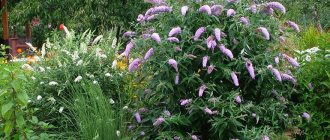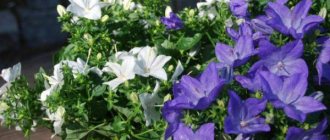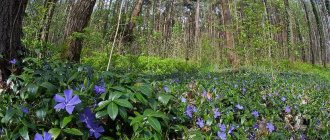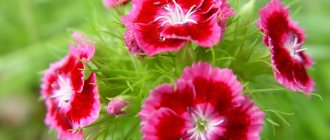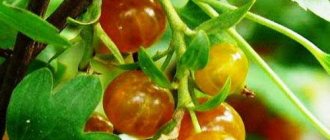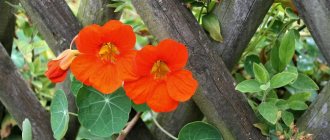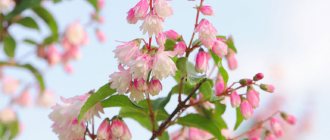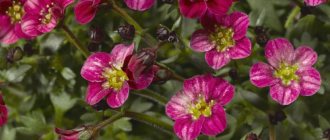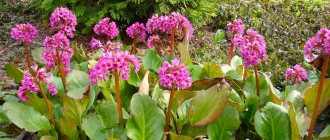- October 20, 2018
- Trees and shrubs
- Julia Master
The almond bush is rightfully considered by gardeners to be one of the most beautiful ornamental shrubs. Its abundant flowering occurs in April-May, during this period it is the main decoration of the garden. There are many varieties of almonds, differing in flower color and flowering period.
Botanical description
Almond (lat. Amygdalus) is an ornamental shrub or tree from 1 to 6 m high, belongs to the Rosaceae family and is a relative of fruit trees (apricot, plum, cherry, etc.). It belongs to the stone fruit crops, although it has fruits in the form of nuts. Ordinary almonds are divided into 2 types: bitter and sweet. The fruits of its wild species are not eaten due to the content of hydrocyanic acid in the kernels - this species is grown for the production of medicines.
For many centuries, this beautifully flowering and fertile plant grew in the Mediterranean and Central Asia. Now almond planting has spread to several continents, from Europe, China to the USA. In the wild, almonds grow in groups at an altitude of up to 1.6 km. In Russia, the almond bush has become widespread in the southern regions.
Use in landscape design
The ability of ornamental crops to tolerate low temperatures allowed gardeners and lovers of beauty to grow them not only in the south of the country, but in the middle climate zone and even in Siberia. Species that can recover after freezing are planted:
- steppe;
- Ledebura;
- Georgian;
- three-lobed.
The culture is suitable for creating decorative hedges, very impressive in spring, and as a bright tapeworm in the garden. Beautiful flowering bushes act as an element for alpine slides against the backdrop of large coniferous groups. In autumn and winter, the shrub also has peculiar decorations - fleecy fruits.
Fruits and their uses
The plant is valuable not only for its decorative qualities, but also for its tasty and healthy fruits - almonds. The fruits usually ripen in summer (June-July); in appearance they look like pubescent drupes covered with gray-green hair. Inside the thin shell is a seed (nut) up to 2 cm in size, having a rounded shape on one side and a sharp tip on the other.
Almond nuts are widely used in cosmetology and medicine; they are used in therapeutic diets and for weight loss. In cooking, the fruits are very popular for making cakes, pastries and other desserts. Almonds are used in the production of alcoholic beverages.
Harvest and storage
During the period of ripening of the fruits of the almond bush, the shell begins to crack at the edges, making it much easier to separate it from the fruit. Inside the shell there is an oval-oblong stone of a brownish hue, up to 3 cm long. The finished harvest can be harvested at the end of July . The seed, separated from the pericarp, is dried in open sunlight or in the oven. A fabric bag or cardboard box is suitable as a storage container. The fruits should be kept in a dry and well-ventilated area.
Important! Almonds respond well to pruning and grow rapidly, so errors during the removal of branches can be corrected next season.
Selecting a site for planting
Before planting an almond plant on your site (photo below), you should choose a suitable place for it. In order for the plant to be healthy and bloom abundantly, it needs a space protected from wind and drafts, and a large amount of sun. Almonds do not tolerate shade, so the southern part of the site, which is well lit all day, will be optimal.
The shrub does not have any special requirements for the soil, but prefers sandy loam or light loamy soils that have a good supply of nutrition (preferably fertilized with compost). Groundwater should not come close to its roots: if an area on clay soil is flooded, the plant will die. The soil must be non-acidic, pH = 4.5-7.5, otherwise it is better to neutralize it by adding lime.
Reproduction
Ornamental almond shrubs can be propagated in several ways:
- Division, in which a very overgrown bush can be divided into several parts, which are planted separately.
- Root shoots, which often grow after the next pruning of branches, are planted in the second year after the formation of a good root system.
- Cuttings are carried out after preliminary preparation: cuttings are cut out in July, selecting parts with 2-3 nodes; when planting, they are buried, leaving only one on top of the soil; During the first wintering, the plantings must be insulated with straw or leaves.
- Layering - done by bending shoots to the ground, which are sprinkled with earth; after the roots appear (after 1 year), the layering can be separated and planted.
- Propagation by seeds is carried out in the fall, immediately after collecting almonds from the bush, planted to a depth of 8 cm, and also in the spring - to a depth of 6 cm, making preliminary stratification.
- Almonds can be grafted onto sloe, cherry plum or plum bushes, after which budding is done in mid-summer.
Propagation of almonds from an adult tree
Cultivated almonds can be propagated vegetatively - by separating cuttings, shoots, offspring from the mother plant with their subsequent development into a whole organism.
Cuttings
For this method, planting material is prepared in the second half of June:
- Semi-lignified cuttings with two nodes (15-20 cm long) are cut from the tops of the current year's shoots;
- cuttings are immersed in a growth stimulator for 16 hours;
- a soil mixture of equal parts sand and peat is poured into containers or boxes;
- the cuttings are planted in planting containers and for further rooting they are placed under a film in a cold greenhouse for 20–30 days;
- After this time, the cuttings are transplanted into open ground to grow.
Root growth
With the help of intensive pruning, the active appearance of young shoots around the almond tree or bush is achieved. In the second year of life, when the root system of the offspring is fully formed, they are separated from the mother plant and transplanted to a permanent place. Further care for them is carried out in the same way as for annual seedlings.
Cultivated almonds can be propagated vegetatively - by separating cuttings, shoots and offspring from the mother plant
Layerings
For propagation by layering, the most flexible shoots of the lower tiers are selected. They are laid on the ground, fixed in several places with wooden or wire pins and covered with a layer of earth 15–20 cm thick. For better rooting, the shoots are watered throughout the season, the soil around them is loosened, and weeds are weeded. After the cuttings have developed a well-developed root system (usually after a year), they are removed from the main plant.
Budding
To preserve the characteristics of the variety, vegetative propagation is used - budding onto a rootstock. For this, you can use any variety of almonds, including bitter seeds. The operation is carried out in mid-July - early August.
To preserve the characteristics of the variety, vegetative propagation is used - budding on the rootstock
- A rootstock is selected - a one-year-old well-developed seedling with clearly formed eyes and a root collar thickness of at least 8 mm.
- The vegetative bud (scion material) is cut from the desired tree along with the bark layer.
- Stepping back from the base of the rootstock to a height of 10 cm, a T-shaped cut is made on the trunk into which the scion is inserted.
- The budding site is tightly tied with film or tape, leaving the bud outside.
- The bandage is removed no earlier than after 1.5 months.
The oculant, which has grown to a height of 10 cm, is hilled and this operation is periodically repeated. Emerging shoots on the rootstock and oculant must be removed.
Variety of varieties
Common almonds have many varieties, some of them grow as trees (up to 6 m in height), others as shrubs.
Almond plants planted in central Russia have good resistance to frost, however, due to early flowering, many buds may freeze, which affects the size of the crop. To get guaranteed good fruits, experts recommend planting varieties that have a long period of bud formation and later flowering.
The most suitable frost-resistant varieties:
- “Nikitsky” is a shrub up to 5 m high, has large fruits and a long dormant period, good yield, suitable for growing in any region of Russia, blooms in mid-April, but for pollination it is necessary to plant a plant near it with the same flowering period.
- “Primorsky” - height up to 3.5 m, blooms in April, fruits are elongated with a rounded base and a sharp tip, a large harvest ripens by mid-November.
- “Dessert” - has a dense spherical crown, height up to 4.5 m, flowering in April, the fruits are oval in shape with a slightly pointed tip.
Shrub varieties
Lower varieties of shrubs:
- “Petiolate” - has high productivity and winter hardiness, a shrub up to 2.5 m high, late flowering, a large number of fruits, but the size is slightly smaller than other varieties.
- Common almonds are the most popular among gardeners.
- “Three-lobed” is a spreading bush up to 3 m high, with flowers arranged in pairs on the branches, the leaves form 3 lobes and are covered with pile at the bottom, has 2 decorative subspecies (“plena” and “Kyiv”).
- “Steppe” is a deciduous shrub (also called “low” or “bean”) up to 1.5 m high with a spherical crown, distinguished by bright pink buds, oblong lanceolate leaves, short flowering (10 days), inedible fruits.
- “White Sail” is an almond bush (photo below) of a southern variety, decorated with snow-white buds, flowers up to 1 cm in size, characterized by increased drought resistance, and can go without watering for a long time.
- “Plena” - has pinkish flowers that bloom immediately after the first leaves appear.
- “Kyiv” - decorated with fluffy flowers of a rich pink hue, which bloom even before the leaves appear.
- “Anyuta”, “pink mist” - bushes with pink flowers of several shades.
- “Pink Flamingo” is an early variety, blooms earlier than others, is decorated with double pink flowers, and is often used in landscape design to decorate personal plots.
- Georgian almond, growing only on the slopes of the Caucasus, is a bush up to 1 m high, frost-resistant, has large flowers of deep pink color and long leaves (up to 8 cm), blooms in May, frost-resistant, drought-resistant variety - used in breeding work, resistant to pests and diseases, life expectancy is up to 30 years.
- “Ledebura” - a light-loving, frost-resistant variety, common in Altai - is distinguished by bright pink-red flowers that bloom earlier than other varieties, the duration of abundant flowering is 3 weeks, fruiting begins at the age of 10.
- “Petunnikova” is a shrub species common in Central Asia, up to 1 m high, the crown is in the shape of a ball, the bark on the branches has a gray-brown tint and a yellow tint, the leaves are lanceolate, have jagged edges, it begins to bloom at 3 years in May, the flowers are pink, fruiting begins at 5 years of age, the nuts are yellow-orange and small.
- Hybrid variety (No. 3) - its flowering resembles Japanese sakura, the flowers are double, bright pink.
Where does it grow
The culture spread from Western Asia (Arabian Peninsula). Then the plants took over the Mediterranean basin. Significant plantations appeared in Italy, Spain, and North African countries. Almonds moved to other continents after the discovery of the New World. In California (USA), industrial-scale groves currently produce half of the world's almond crop. Successfully cultivated in Australia and the Pacific Islands.
In Russia
In Central Asia, the soil and climate are suitable for almond plantings. In Tajikistan, the deciduous crop has even become a symbol of the entire city of Kanibadam, where it successfully grows in nurseries and agricultural enterprises.
There are not many places in Russia where almonds grow. Intense natural light is provided by Crimea and the Black Sea coast of the Krasnodar Territory. There are slightly fewer plantings in the Stavropol region. The middle zone has small plantings to decorate gardens and city parks. The trees can withstand frosts of -25°C.
Almond bush: planting and care, photo
The plant is planted in open ground in 2 terms:
- in spring, after the onset of warm weather;
- in autumn (middle and end), after the leaves fall from the trees.
Shrub planting procedure:
- Dig a hole in the chosen place up to 30 cm deep, the interval between bushes should be at least 3 m.
- Fill the drainage (broken bricks, crushed stone), and sand on top.
- A support in the form of a pole is placed in the center, rising 50 cm above the ground.
- Place the plant in the hole so that the root collar is 3-4 cm higher.
- Fill the hole with prepared soil mixture (sand, humus, leaf soil).
- Pour a bucket of water and mulch with peat.
Outdoor care
Three-lobed almonds are quite easy to grow. The rules of care are simple and consist of weeding, loosening, pruning, and watering.
Water the plant periodically moderately; during the flowering period of the bush, more water is required than at other times, the duration of flowering depends on this. In moist soils, moderate, even infrequent, watering is required. When growing almonds, water strictly under the trunk; water on the above-ground parts of the plants can cause burns of leaves and flowers. Loosen and remove weeds around the trunk 2-4 days after watering.
If necessary, Louiseania is transplanted to another place; the procedure is carried out in August. The plant tolerates transplantation calmly.
The bush is frost-resistant, however, shelter for the winter will not hurt; the branches are tied into a bundle, wrapped in woven material, and the soil around the trunk is mulched with peat.
Feeding and watering
Almonds are a fairly drought-resistant plant. During flowering, the bush requires abundant watering, regardless of the composition of the soil on which it grows. In the future, a bush on sandy soil requires more watering than on clay soil. Overmoistening of the soil and stagnation of water can cause rotting of the root collar. The plant needs water when the soil dries to a depth of 1.5-2 cm.
Fertilizing is applied after the flowering period, using organic fertilizers (compost, humus). 7-14 days after fertilizing, a urea solution is introduced into the soil. One bush will need 10 grams of fertilizer per bucket of water. In the fall, apply no more than 50 grams of mineral phosphorus fertilizers (superphosphate or wood ash at the rate of 1 glass per bucket of water) and dig shallowly. With the onset of winter, the soil around the trunk is mulched with peat or leaf humus (5-6 kg per bush).
How to prune a bush correctly
Almonds easily tolerate decorative and sanitary pruning, which is necessary for the formation of the crown and the health of the bush. Pruning is carried out annually, starting from the age of two years of the plant. As soon as the bush fades, all branches are shortened by 2/3 of their length. This procedure stimulates the growth of new shoots. Branches growing deep into the crown are pruned. They contribute to thickening of the crown, which reduces the degree of ventilation of the bush, and as a result, diseases can begin. Sanitary pruning is carried out in early spring before the flower buds begin to swell. Remove dried, frozen branches and shoots.
Watering and caring for shrubs
Decorative almonds (photo above) have many advantages, including fast growth, unpretentiousness, good adaptation to urban conditions, they are not afraid of drought and are a valuable honey crop.
The list of care activities includes:
- regular watering (no more than once a week), because the plant does not like stagnant water;
- mandatory loosening of the soil after watering (to a depth of 7 cm);
- removing weeds around the plant;
- feeding in spring (mullein or manure), in autumn (superphosphate or potassium);
- ensuring safe wintering - covering seedlings with straw, leaves, etc., layer height of at least 15 cm, adult bushes can be covered.
Trimming
In order for the decorative almond bush (photo below) to have an aesthetic appearance and beautiful flowering, it needs to be regularly pruned in several stages:
- spring – sanitary pruning (removal of diseased and damaged branches);
- the formation of the crown (usually in the shape of a bowl) is done after the almonds bloom - the branches are cut using the thinning method so that a ring is formed;
- at the end of August it is necessary to cut off the apical buds so that they do not freeze in the winter months;
- in the eighth year of life, the removal of old branches is mandatory.
After pruning, the cut areas should be lubricated with a fungicide or garden varnish.
How different types and varieties of almonds look and bloom
The flowering time is an amazingly beautiful sight. Among the plants waking up in spring, an airy, soft pink, fragrant cloud of almonds forms. You can see what different types and varieties of Louisiana look like during the flowering period in the photos below.
Diseases and pests
The almond bush is susceptible to various diseases that need to be treated:
- gray rot - diseased branches need to be cut off after the bush has flowered;
- leaf curl - treat with Bordeaux mixture, first removing all damaged leaves;
- moniliosis (a fungal disease that affects young weakened shoots) - treatment is carried out in the same way, spraying should be repeated every 15-20 days, for prevention, pruning should be carried out annually after flowering;
- rust - treated by treating branches with a colloidal aqueous suspension of sulfur or powder.
The shrub is susceptible to attack by pests, including aphids, plum moths, and leaf rollers. To kill insects, it is recommended to spray with a prepared solution of chlorophos or karbofos.
Decorative properties
The almond bush (photo below) usually begins to bloom only when the plant reaches four years of age. This is incredibly beautiful - the bush is covered with double white or pink flowers of various shades, which not only decorate the garden plot, but also fill it with a wonderful aroma. Its delicate flowers attract honey plants, which flock from all over the area.
In landscape design, almonds are used in low varieties, which are ideal for decorating open spaces and rockeries. It is also planted in the background in mixborders, where it attracts attention in the spring months. In summer it becomes an excellent backdrop for planted perennial flowers.
